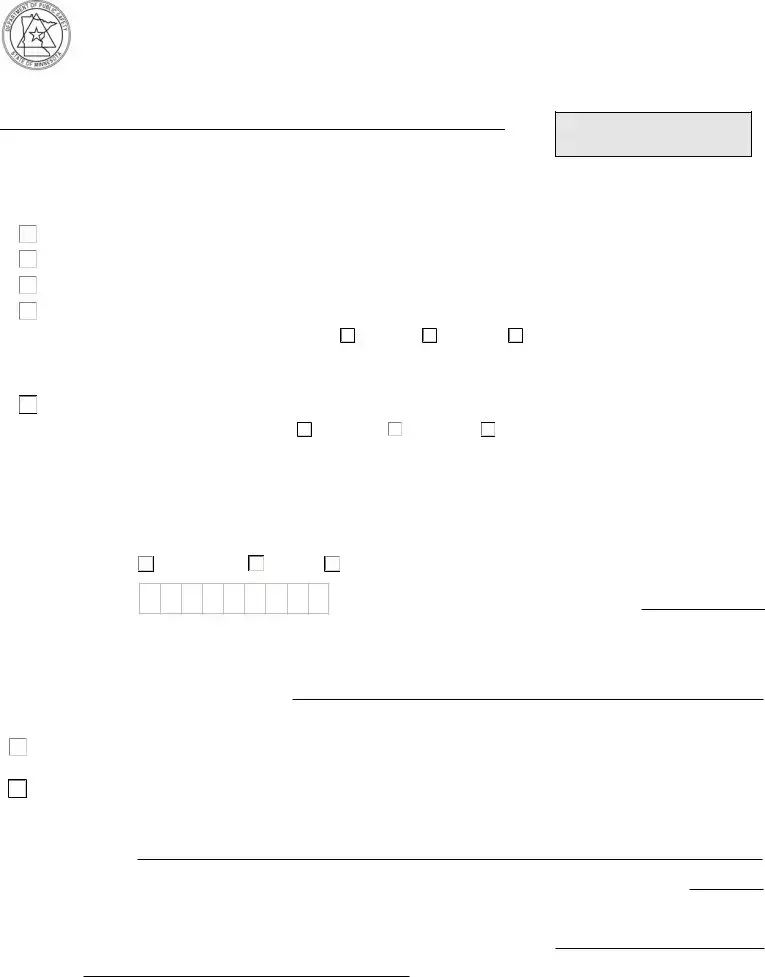Frequently asked questions about the Minnesota Fuel Permit Application are addressed below to provide clarity and assist individuals and businesses in their interactions with the Minnesota Department of Public Safety, Driver and Vehicle Services.
- What types of permits can I apply for using the Minnesota Temporary Registration / Fuel Permit Application?
This application allows for the request of several permits, including the 120 Hour Trip Permit, the 120 Hour Fuel Trip Permit, the 120 Hour Unladen Weight Hunters Permit, Temporary Weight Increase permits for various durations, and Base Plate Permits. Each permit serves different needs, from temporary vehicle registration to specific allowances for fuel and weight capacities.
- Are there any filing fees for these permits?
Yes, most permits require a filing fee. For instance, the 120 Hour Trip Permit has a $15 cost plus a $10 filing fee. The 120 Hour Fuel Trip Permit is $25 with no filing fee. The Temporary Weight Increase and Base Plate Permit fees vary based on the weight, duration, and other factors but also include a $10 filing fee. Remember, the Unladen Weight Hunters Permit only requires the filing fee of $10, without an additional permit fee.
- How often can I apply for a 120 Hour Trip Permit?
A 120 Hour Trip Permit can be issued for a vehicle once every 30 days. This means if you need temporary registration for a vehicle, you can reapply for this permit once the 30-day period has expired.
- Is there a limit to the number of 120 Hour Fuel Trip Permits I can obtain?
No, there is no limit to the number of 120 Hour Fuel Trip Permits you can obtain for a vehicle. These permits are designed to accommodate your fuel needs without the constraints of a limited issuance.
- Can the Temporary Weight Increase permit replace the requirements for an overweight permit?
No, the Temporary Weight Increase permit does not replace the requirements for an overweight permit authorized by the Minnesota Department of Transportation (MnDOT) and/or local road authority. It's important to secure the proper permissions for overweight loads beyond what's covered under the temporary permit.
- What information do I need to provide when applying for a permit?
You'll need to furnish details about the vehicle, including the Vehicle Identification Number (VIN), model year, make, type of vehicle, and gross weight in pounds. Additionally, the registered owner's name, contact information, and, for some permits, the vehicle's USDOT Number or justification for its absence are required.
- How is my personal information used and protected in this process?
Personal information collected during the permit application process is used to identify the owner and the vehicle for which the permit is issued. This information is classified as private data and is released only as authorized or required by state and federal law, ensuring confidentiality and protection of your information.
- What are the fees for a Base Plate Permit?
The fees for a Base Plate Permit include a $10 filing fee plus monthly registration fees, which vary based on the vehicle's weight, model year, and duration of the permit. The fees are structured to accommodate vehicles of various sizes and ages, ensuring fair charges for the temporary registration provided.
For any additional questions or for further clarifications, getting in touch with the Driver and Vehicle Services via the provided contact details can provide direct assistance and more detailed information tailored to individual circumstances.

